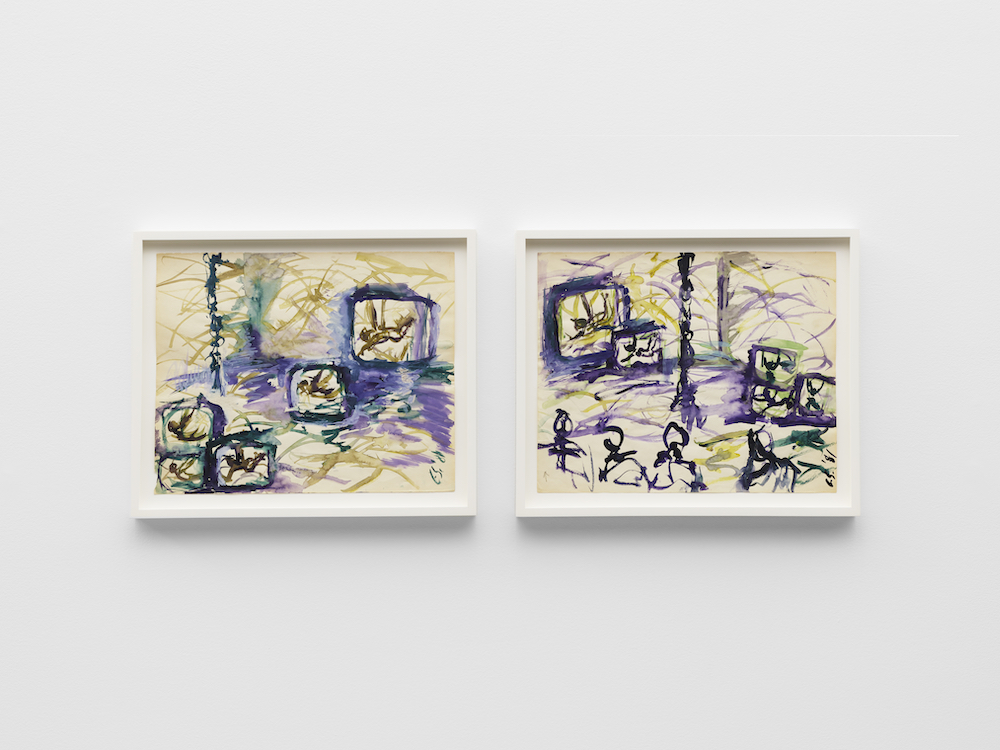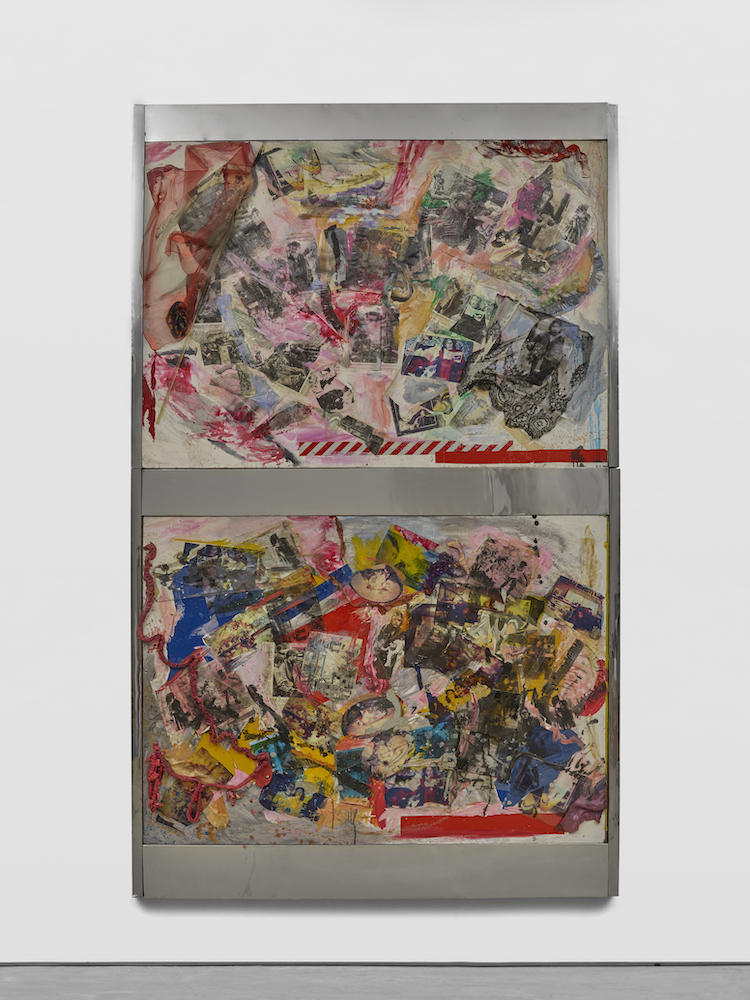This, remarkably enough, is Carolee Schneemann’s first solo exhibition in Los Angeles, six years after her passing. Schneemann may be late, but her show isn’t. It may indeed be a case of too little; the sparse hanging (8 wallworks and an installation) barely hints at the bold intermedialist’s half-century-plus of formal experimentation and thematic provocation. But it couldn’t come at a more critical time. In this benighted hour, American progressive culture has its work cut out for it and needs a natural revolutionary like Carolee to lead the re-charge.
A legend in her own time, Schneemann is practically a myth this side of her death. Yes, she was as complex, confrontational, and even self-sacrificing as we now remember her. But the goddess she projected in her performances and films, her paintings and her photographs, her videos and her installations was the goddess all feminist artists were seeking to bring to the fore, a collective Athena—and in cases like Schneemann’s, a Dionysian one, ready to move minds and mountains through social shock and sexual eruption.
Which is to say that Schneemann worked with equal fervor outside and inside, one day staging a scandalous event and the next day collaging together snapshots and drawings of her in flagrante delicto with her lover and in more decorous, almost worshipful intimacy with her cat Kitch. At certain points, which even as slim a show as this makes manifest, the private and the public conflate, and Schneemann flows seamlessly in gesture and in context from boudoir to theater. Schneemann was always her own model; some of her lovers (most famously musician James Tenney) got into the frame, others kept offstage.

Carolee Schneemann, Untitled, 1981. © Carolee Schneemann Foundation. Courtesy Lisson Gallery.
Schneemann’s was the Happenings generation, emerging from the Beat era and heading up the 1960s radical procession. As such, she is associated with Fluxus and counted its diverse participants among her best friends. But she was not the only nominal Fluxist to distance herself from the movement’s self-admitted proto-minimalist and proto-conceptualist reductivism. Nor was she the only one to cavil against what she perceived as the streak of sexism scarring Fluxus’ otherwise counter-cultural bona fides. Among a network of Zen monogesturers, Schneemann was unapologetically “more-is-more” funky.
The mixed-media collages, drawings, paintings, and single installation (comprising five video screens playing a 3-channel video and surrounded by myriad hand-cast rocks) on view—all works from the 1980s, a period of consolidation and renewal for Schneemann—give us a sense not so much of Schneemann’s historical centrality as of her abiding sensibility; her unmistakable artistic personality which dared her fellow artists to get raw and let it all hang out. Schneemann’s art was noted for its hyper-viscerality; in happenings such as Meat Joy (1964) and in solo performances like Interior Scroll (1975)—and even in dense, effulgent films like Viet Flakes (1965)—Schneemann demonstrated a fearlessness, a feverish, literally gutsy voluptuousness that paid refinement no heed. Formally, as even the few mid-career works here evince, the artist took her ecstatic appetite to its logical limit, where image is in fact image soup and subject matter is engulfed into a kind of universal corpus, the body as galaxy. These drawings, these videos, these hallucinations set the writhing organs ablaze from within.
The statement Schneemann’s art makes is not about an issue or a mindset but about a way of living life through art and vice versa, and not holding back on anything. Sure, this long career of explosive erotic demonstration challenges male chauvinism and feminism alike, but, as even these mid-career studio works attest, it does so palpably, materially, embracing nature, material, device, and flesh in a churning Freudian nostalgie de la boue.
Even six years past her passing, it’s hard to believe Schneemann is no longer among us. But her energy is. Her aesthetic is. And her example is. The cretinous regime (not just in America) that today would brand her an entartete Künstlerin needs to have her gritty griot attitude stuck in its eye. Make Art Grab Ass! WWCD?


